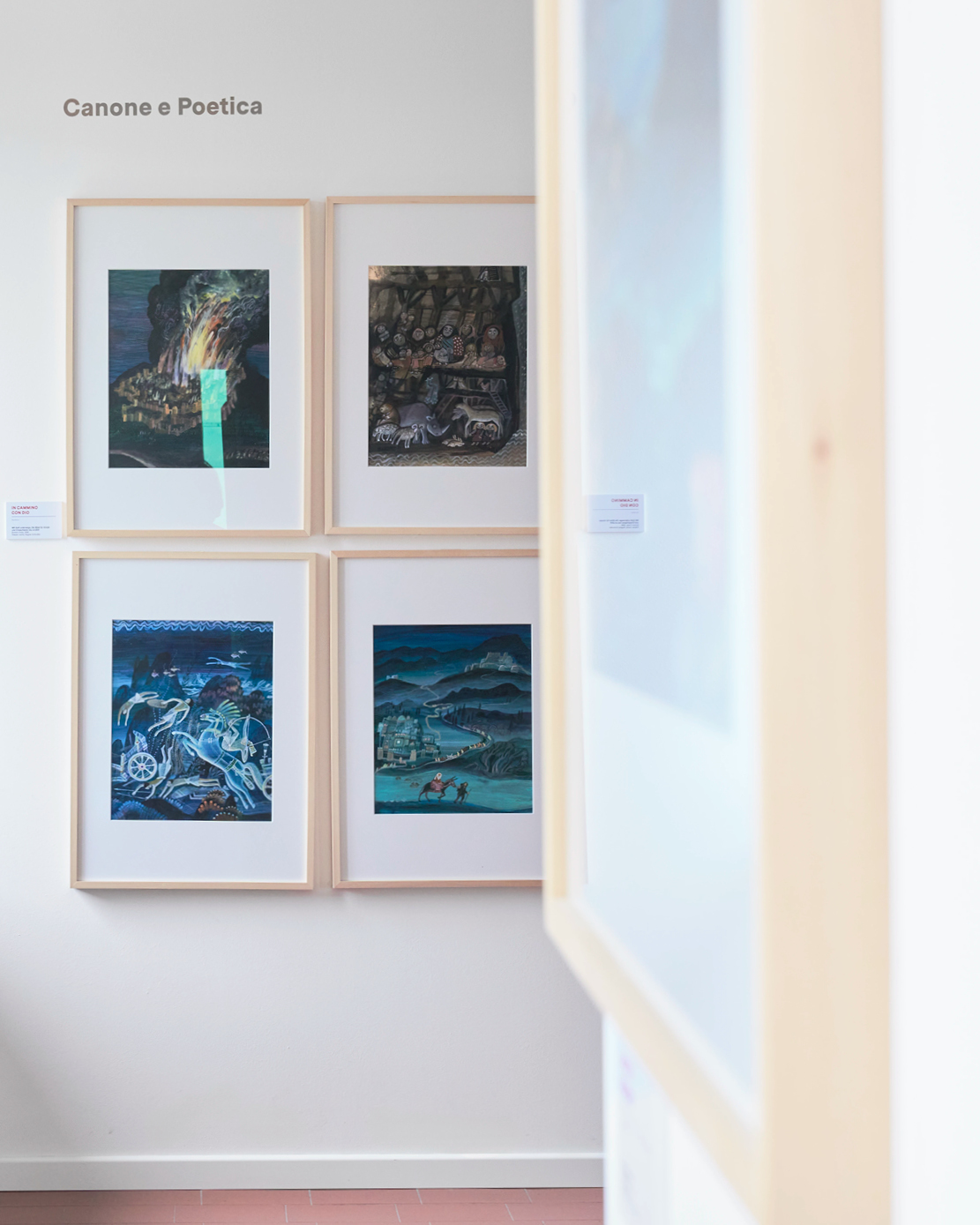Even in the field of stage design, the lessons from Luzzati remained central to him. The vision of both, in fact, triumphantly submits to the theatrical centrality, as though viewing the scene from an auditorium. Thus, for both, the backgrounds are nothing more than flat backdrops on which to place the “actors,” who in turn are shaped into compact and cohesive forms to move more effectively across them.
In both cases, the strictly orthogonal construction of the structures of buildings and cities coincides, while the natural environments are freer and more curvilinear (…). The characters are always observed not too closely, but rather in long shots, generally in full figure, sufficiently small in relation to the vastness of the scene. This is also a stylistic choice that carries a philosophical evaluation… The favored perspective from slightly above, which compresses the view, as if taken with a telephoto lens, continues to place actors and the stage, protagonists and supporting characters, potential close-ups and inevitable backgrounds on the same level (…).
Text by Ferruccio Giromini


